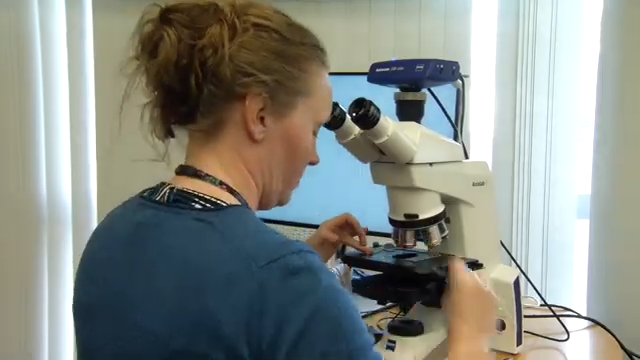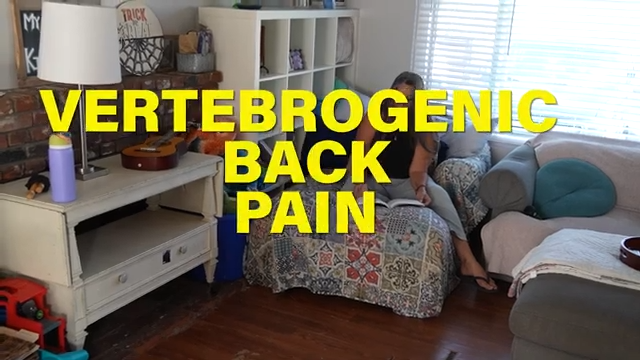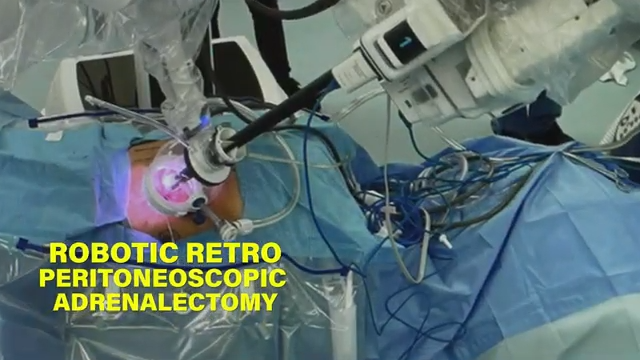SAN ANTONIO, TX (Ivanhoe Newswire) — Each year, nearly 800,000 people suffer a stroke. Ten to twenty percent will die. Now, there is an interventional software system that will shave precious time, spare brain tissue, and save lives.
Sylvia Novier and her husband had just returned from a trip. As she was telling her daughter about it over the phone, she thought she heard the phone ring at the same time.
“I’m trying to figure out who’s calling me while I’m talking to my daughter, but nothing is connecting,” said Novier.
Her husband watched helplessly, terrified by watching what was happening to her.
“He got me into the den and said I think you’re having a stroke and I couldn’t understand why he would think I was having a stroke,” said Novier.
Novier asked for a drink of water, but when she put it to her lips …
“I tried to drink it and it just fell down my front,” she said.
Novier was suffering a stroke. Little did she know that by the time EMS transported her to the hospital and they conducted CAT scans, the neurosurgeon had already received the test results in his phone’s email.
“The strange thing about it was I had not received an email yet from a neurologist or any physician. It was a patient that I did not know about,” said Justin Mascitelli, MD, Assistant Prof Neurosurgery at the University of Texas at San Antonio.
The doctor crossed the hallway into the ER, and there was Novier.
“It all happened very quickly,” said Dr. Mascitelli.
“They immediately rolled me in. I’m trying to tell my grandson, I love you, they rolled me in and my legs were shaking,” Novier stated.
Thanks to the rapid stroke technology, the doctor was ready for surgery in 20 minutes.
“It saved my life. It saved me from a total debilitating life that would limit me and be harder,” Novier said.
Rapid stroke technology provides faster visualization with extremely accurate scans. That enables surgeons to make split-second decisions on the most effective treatment. There are now 500 stroke centers using this cerebrovascular imaging.
Contributors to this news report include: Donna Parker, Field Producer; Bruce Maniscalco, Videographer; Cyndy McGrath, Supervising Producer; Hayley Hudson, Assistant Producer; Roque Correa, Editor.
To receive a free weekly e-mail on Medical Breakthroughs from Ivanhoe, sign up at: http://www.ivanhoe.com/ftk
MEDICAL BREAKTHROUGHS
RESEARCH SUMMARY
TOPIC: RAPID STROKE: SAVING LIVES IN REAL TIME
REPORT: MB #4498
BACKGROUND: A stroke occurs when blood flow to an area of the brain is cut off or reduced. When this happens, brain cells are deprived of oxygen and quickly begin to die. When brain cells die during a stroke, abilities controlled by that area of the brain such as memory and muscle control are lost. The effects of stroke depend on where it occurs in the brain and how much damage the brain sustained. It can range from temporary weakness of an arm or leg to being permanently paralyzed on one side of the body. Stroke is the fifth leading cause of death in the U.S., but there are nearly seven million stroke survivors in the country. Some people recover completely from strokes, but over two-thirds of survivors will have some type of disability. Up to 80 percent of strokes are preventable. Knowing how to identify a stroke, learning the risk factors, and responding quickly to a stroke will all help reduce the impact of one.
(Source: http://www.stroke.org/understand-stroke/what-stroke)
RISK FACTORS AND DIAGNOSIS: Certain conditions can increase the chance of stroke, such as atrial fibrillation and fibromuscular dysplasia. Family history of strokes increases your risk. After age 55, the chance of suffering a stroke doubles each decade. African-Americans are at more at risk for strokes as they have a higher risk of high blood pressure, diabetes, and obesity. Birth control pills and post-menopausal hormone therapy can increase stroke risk. Signs that a stroke is occurring include trouble speaking or understanding, paralysis or numbness of the face, arm, or leg, trouble with seeing in one or both eyes, a headache, and trouble with walking. 9-1-1 should be called at the first sign of stroke. Early action can minimize brain damage and potential complications. For more information, contact the Stroke Help Line at 1-800-STROKES, Monday through Friday from 9 AM to 4 PM (MT).
(Source: http://www.stroke.org/understand-stroke/what-stroke/stroke-facts)
TRANSIENT ISCHEMIC ATTACKS: People can experience temporary stroke symptoms called transient ischemic attacks (TIA) that usually don’t cause permanent damage or disability. These symptoms appear and last less than 24 hours before disappearing. Those who have suffered one or more TIA are 10 times more likely to have a stroke and should not ignore these attacks. Nearly half of all strokes occur within the first few days after a TIA. Depending on the cause of the TIA, future strokes can be prevented. Along with lifestyle changes such as diet, physical activity, limiting alcohol intake, and not smoking, healthcare providers may recommend medications to treat blood pressure, high cholesterol, or heart disease to reduce the risk of further TIA or stroke. There are also medications that help prevent blood clots from forming, reducing the risk of full-blown stroke.
(Source: http://www.stroke.org/understand-stroke/what-stroke/what-tia)
FOR MORE INFORMATION ON THIS REPORT, PLEASE CONTACT:
Natalie Gutierrez, PR, Baptist Health System
210-297-1028
Natalie.Gutierrez@baptisthealthsystem.com
If this story or any other Ivanhoe story has impacted your life or prompted you or someone you know to seek or change treatments, please let us know by contacting Marjorie Bekaert Thomas at mthomas@ivanhoe.com




